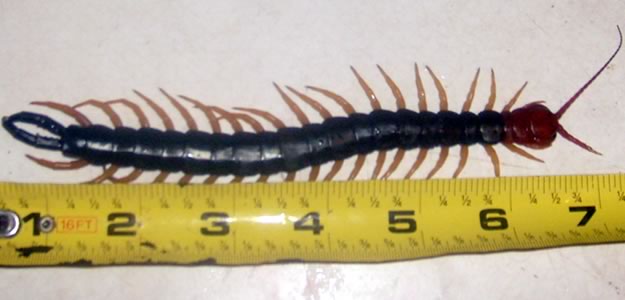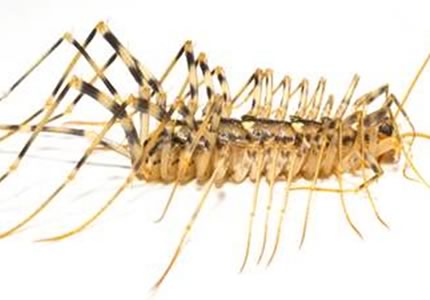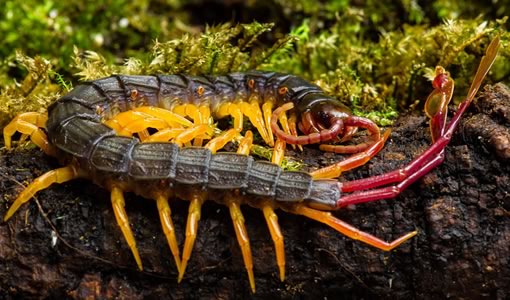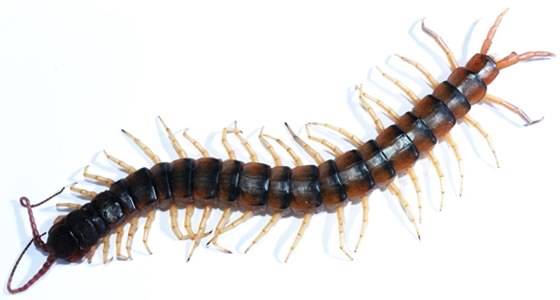
CENTIPEDES
Giant Redheaded Centipede
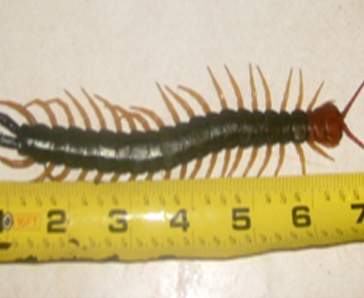

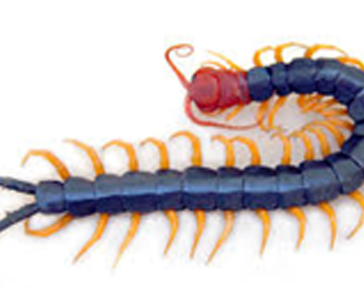
These fast moving and aggressive titans are among the largest centipedes. They attract a great deal of attention because of their size and fierce appearance. Specimens average about 6½” in length. They have been known to deliver painful bites, but symptoms seem to disappear quickly. Females lay eggs and care for their young until they can fend for themselves. They are a predatory arthropod, feeding on small insects and other arthropods.
House Centipede
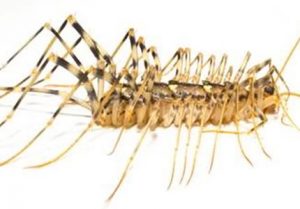
Habits
Most house centipedes are nocturnal, and prey primarily on flies, spiders, and sometimes plant tissue.
Habitat
Centipedes are found throughout the United States and the world. They are typically found in areas of high moisture, such as in rotting logs, under stones, in trash or piles of leaves/grass. When they invade homes, centipedes are most commonly found in damp basements, crawlspaces, bathrooms, or potted plants.
Threats
Centipedes are generally considered nuisance pests, as they do not pose significant health or property threats. However, all house centipedes have poison jaws with which they inject venom into their prey. If handled roughly, some larger species can inflict a painful bite that can break human skin and causes pain and swelling, similar to a bee sting.
Tiger Centipede
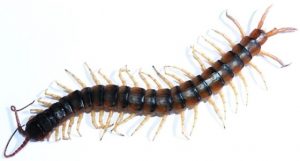
Redheaded Centipede can catch lizards and rodents
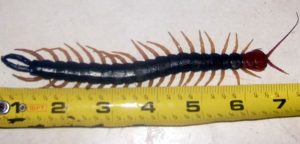
Flag Tail Centipede
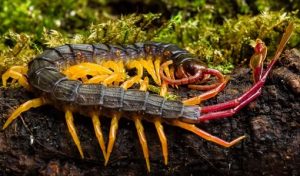
 Little Rock, AR 501-868-3837 | Russellville, AR 479-968-4777 | Hot Springs, AR 501-442-5653 | Fayetteville, AR 479-899-6874
Little Rock, AR 501-868-3837 | Russellville, AR 479-968-4777 | Hot Springs, AR 501-442-5653 | Fayetteville, AR 479-899-6874


